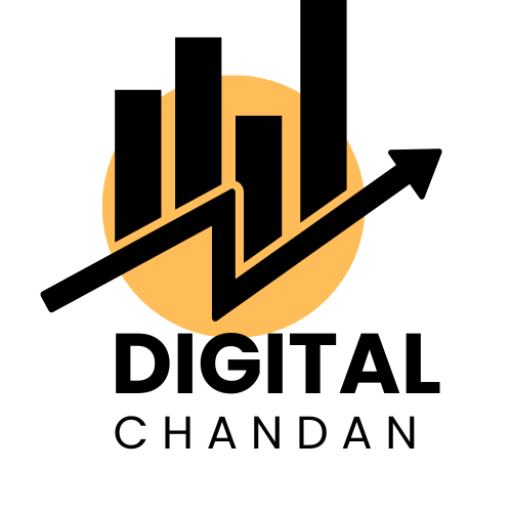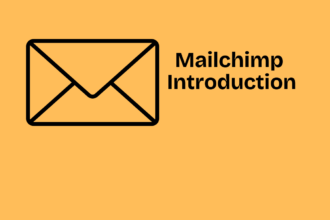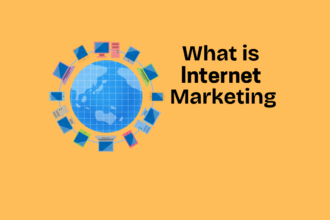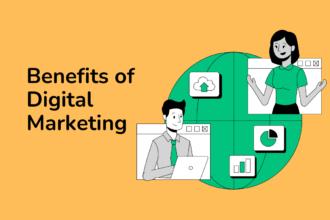SEM (Search Engine Marketing) and SEO (Search Engine Optimization) the main difference is that SEO focuses on getting traffic from paid search whereas SEO focuses on getting traffic from organic search.
image
To market your business in Search Engines like Google or Bing both SEO and PPC are the ways. So both are SEM (Search Engine Marketing) types.
In this blog, you will know how to create a winning SEM (Search Engine Marketing) strategy to bring more traffic to your website.
But first, let’s know the basic terms.
What is SEO?
The process of focusing to rank in SERPs (Search Engine Result Pages) organic with the help of keywords and other strategies is known as Search Engine Optimization (SEO). It includes 4 main steps:
(i) Keyword Research – What people are searching to find
(ii) On-page SEO – For Seachers Craft Content
(iii) Off-Page SEO – From other Websites Build authority and Trust
(iv) Technical SEO – Make sure search engines can easily find, crawl and index your website content.
Keyword research
Understanding the phrases and words your buyers or customers type into Search Engine. With the help of keyword research tools, you can do both like Ahrefs Keywords Explorer.
For instance, per month there are 1.5k searches in the U.S for the keyword “SEO vs sem”:
image
Would send likely more traffic if you are ranking for this keyword.
Check out this blog to learn about Keyword Research: The Beginner’s Guide
On-page SEO
Crafting the content kind which searchers want to see is On-page SEO. The key you are targeting depends on how you do it.
For instance, people typing the keyword “SEO vs sem” wanted to learn. They wanted a blog that explain the key diff. From organic search results, you can tell.
image
People typing the keyword “baby clothes” wanted to buy. They want results that are e-commerce.
image
Once more, we can inform from the organic results:
image
Providing Searchers with what they wanted is known to line up with the search intent of your content.
For on-page SEO Search Intent is not only important. There are other important factors which are :
(i) Optimizing images
(ii) Crafting a compelling title
(iii) Strategically placing keywords
(iv) Using descriptive URLs
Read this blog to learn more about On-Page SEO: The Beginner’s Guide
Off-Page SEO
The process where you do activities outside your website to show Google that your pages justify ranking. The most effective off-page SEO task is building high-quality backlinks because backlinks are one of Google’s top 3 ranking factors. Vote from other websites they act like.
For instance, let’s think this blog gets backlinks from another website that is popular in SEO (Search Engine Optimization). This shows Google that others in the niches are for our content vouching, which incident may that its ranking should be deserved.
With the help of Ahrefs Site Explorer, you can see who’s linking to any page in the Backlinks report.
image
For Off-page, SEO Links aren’t the only important factor. There are things like reviews that can also play a role.
Technical SEO
The process makes sure search engines can find, crawl and index your content. Unless Search Engine can do this thing you are unlikely to rank.
To explain here’s the flowchart:
image
For instance, let’s think we by crawling these blog-blocked search engines. With this, it would stop them from seeing what’s on the page and make it harder for them to know what it should rank for. It probably would rank for anything as the results.
Read this blog to learn more about Technical SEO: The Beginners’ Guide
What is PPC?
The form of advertisement where you pay for site clicks from platforms that are popular is known as PPC (pay-per-click).
For instance, clicking this ad on Google costs Apple money:
image
This is what invloves in PPC advertsing in Google:
(i) Bid Setting – Decide how much money for each click you wanted to pay
(ii) Audience Targ – Who should see you ad Decide
(iii) Ad creation – Make a relevant and compelling ad
(iv) Keyword Research – Research what your customers should see in your ad
Keyword research
For Google ads, keyword research is only not finding what customers are searching for. It is about also researching how many ads are most likely, which differs by keyword.
For instance, the average cost per click (CPC) for the keyword “baby clothes” is more than double as compared to the keyword “cute baby girl clothes”:
image
Bid setting
Bid setting is where you decide on how much money you are willing to pay Google for a click of an ad. If competitors outbid you and equally relevant ads have, Google won’t show your ad much and you won’t get so many clicks.
Ad creation
The process where you decide what your ad will say and where it will send people.
For instance, to the Ahref Audit landing page, this ad takes us to:
image
Quality Score Google Gives to your ad, which tells you how useful and relevant your ad is.
Overall, ads are seen by more people with High-Quality Score, and for clicks, they pay less. On improving your Quality Score from Google here’s some advice.
Audience targeting
The process where you decide who should see your ad is Audience Targeting. Based on who they are, and what they are interested in you can target people, where they are, and many more details.
What is SEM?
The process where you operate traffic to your website from Search engines like Google or Bing. From organic or paid results you can drive traffic. You can take the help of SEO to get organic results and pay-per-click (PPC) to get traffic from paid results.
In simple words:
Both PPC and SEO are SEM types.
How long does SEM take?
It depends on whether you are taking benefit of SEO or PPC. SEM can be slow or fast.
PPC is very fast. Google will show start your ad to the searchers after you pay the money, so getting traffic is a very fast step.
SEO is slow-moving. Very slow-moving.
A study conducted over the study of 2 million keywords found that only 22 % of the pages in the top 12 were within the year published.
image
You can’t rank what this does mean. Some pages are under 60 days range.
The lower the keyword’s search volume, the more likely this is to happen, According to our data Ahref.
image
In other terms: Target lower-volume keywords if you want the best chances of fast ranking.
With the keyword Explorer, you can find low-volume keyword explorer:
image
Read this blog if learn more about how to find Low-Competition keywords for SEO
How much does SEM cost?
Doing SEM isn’t free. There is some money which is involved with SEM (Search Engine Marketing), which you are doing whether PPC or SEO.
Each click cost you Money If you are doing PPC. More Clicks = More Spend
Clicks are “Free” once you rank if you are doing SEO. Ranking takes effort and time.
image
Without effort, this didn’t happen. A lot of time researching, creating, and building links to this page with the use of email outreach.
But, SEO is certainly almost cheaper as compared to PPC in this case because the average CPC for “SEO statistics” in the U.S. is very high.
image
Which type of SEM is best?
It is very easy to jump to the conclusion that SEO is the way forward because organic traffic is “free” and passive. Knowing what we now know about SEM.
Sometimes SEO works best, Other times, PPC works best. Using SEO and PPC sometimes can best SEM strategy.
To help you decide between both of them here is the flowchart
image
Right now we have 3 general rules:
- For informational keywords SEO is best.
- For “hard to rank for” keywords PPC is best.
- For ad-heavy keywords both SEO and PPC are the best.
Why let’s look now.
SEO is the best SEM strategy for informational keywords
Good candidates for PPC are keywords where people are looking to learn, not buy.
Very few people will convert, so it’s hard to make a return on your investment is the reason they are good.
For instance, take a look at the keyword “how to eat more protein”. It gets 2.1 k searches monthly and also has a low average CPC of $1.40.
image
In the spite of the fact, you can get 100 clicks from this keyword with just $140, most of these people aren’t in the protein powder market and are unlikely to buy. How to increase their protein intake they just want to learn.
And how do we know this? They are all blog posts. Look at the search results.
image
But you are thinking right now: What’s the point in using SEO to rank organically if few of these searchers are likely to convert?
Very Simple is: SEO is cheaper often, and the number is more likely to work.
For instance, there is a blog post that is ranking in position #9 for that keyword which gets 566 monthly organic search visits estimably. With only one backlink and position is a low-authority website with a DR (Domain Rating) of 41.
image
The blog you are right now reading is basic, short, and dn’tprobably di take so much time to write.
Lucikly 1 or 2 out of 566 monthly organic visitors become lead, optimizing and creating the post was an effort worth it. Can’t the same be said for paid ads, it would cost $325 per month to bring the same traffic with the help of PPC.
image
PPC is the best short-term SEM strategy for “hard to rank for” keywords
Can take years to rank for some keywords.
For instance, if you wanted to rank for the keyword “buy protein powder” with a new store of supplements, your chances of ranking will increase are slim in the short term. The reason is that you are competing with Companies like Walmart, Amazon, and GNC.
image
You should stop using SEO and start focusing on running ads does this mean this?
Necessarily Not. In the short term, PPC is probably your best bet.
3 advantages of running ads:
- You can optimize and test for conversion – The average cost per conversion you can see with Google Ads. Utilize that information to run controlled tests to better your conversion rate.
- You can get valuable keyword data – You can see conversion data for the keyword you are bidding on search term reports in Google Ads. Take advantage of this data and find high-converting keywords to target with SEO.
- You can get traffic immediately – Instant is paid traffic. For conversions send traffic to a page and you can bring sales.
For instance, let’s think you want to sell protein powder.
You will get instant clicks your way if you bid on relevant keywords. Others won’t convert and some of these will convert. To get more juice from your campaigns is by run tests and optimize for conversion, but certain keywords will provide you more traffic as compared to other keywords.
This is how search terms report in Google Ads looks like:
image
In this case, keywords that are more specific like “low carb protein powder” and “organic protein powder” will have higher conversation rates as compared to broad keywords.
As part of a long-term SEM strategy, these keywords may be good candidates.
Paste the keywords in Ahref’s keyword Explorer and sort by Keyword Difficulty if you are excited about which ones are likely to rank easy for in organic search.
image
Using PPC and SEO is the best SEM strategy for ad-heavy keywords
For some keywords than others, Google shows more ads,
For instance, for “car insurance” keywords there are 4 ads.
image
On organic results, there will be wey clicks, as they get pushed down the page.
How many clicks are fewer?
There are clicks on paid results for 23% of searches for the keyword “car insurance”.
image
PPC (Pay-Per-click) is a great way of getting traffic from this keyword this meaning, but what about SEO now?
On how easy it would be to rank organically it depends.
For the keyword “car insurance” would be difficult, as it has an 88 KD score. This means that to rank you need probably lots of backlinks, and that’s rarely a fast process.
Now let’s look at another keyword that is “short-term car insurance”:
image
The keywords have a low KD score, this time, so it also may be a good candidate for SEO to increase traffic in search engines.



